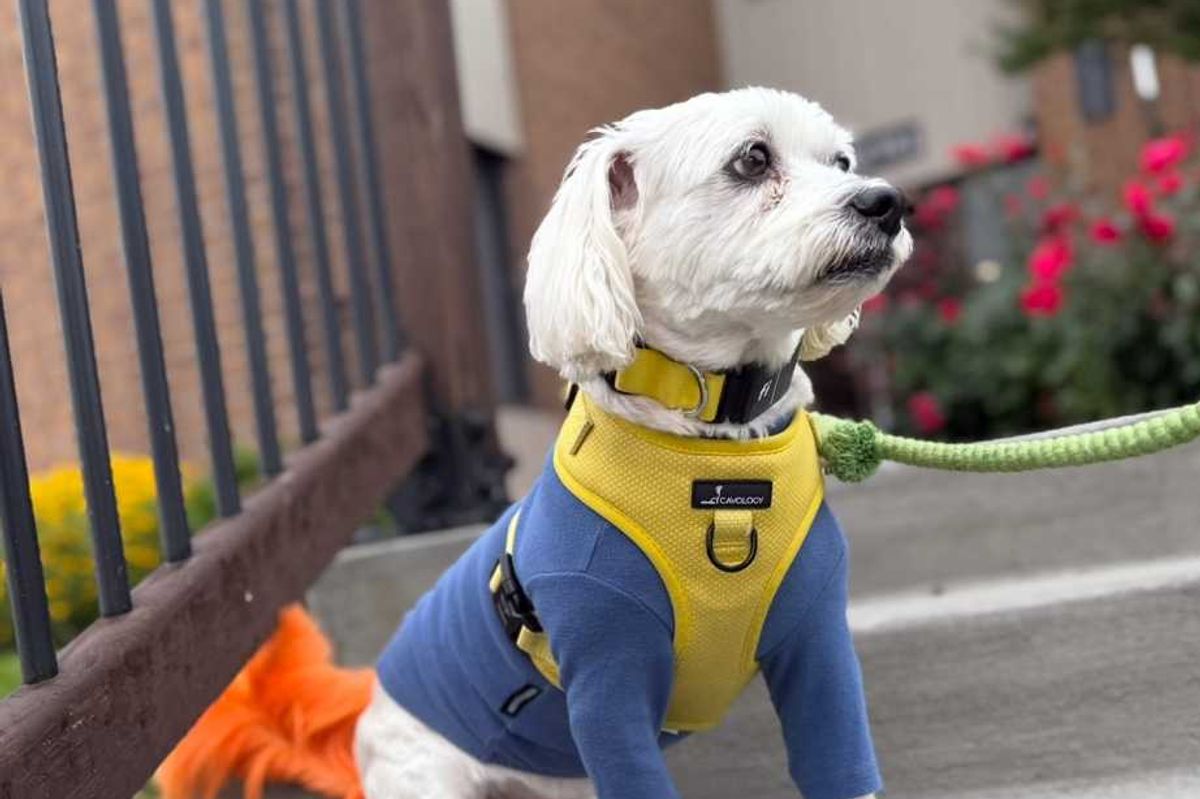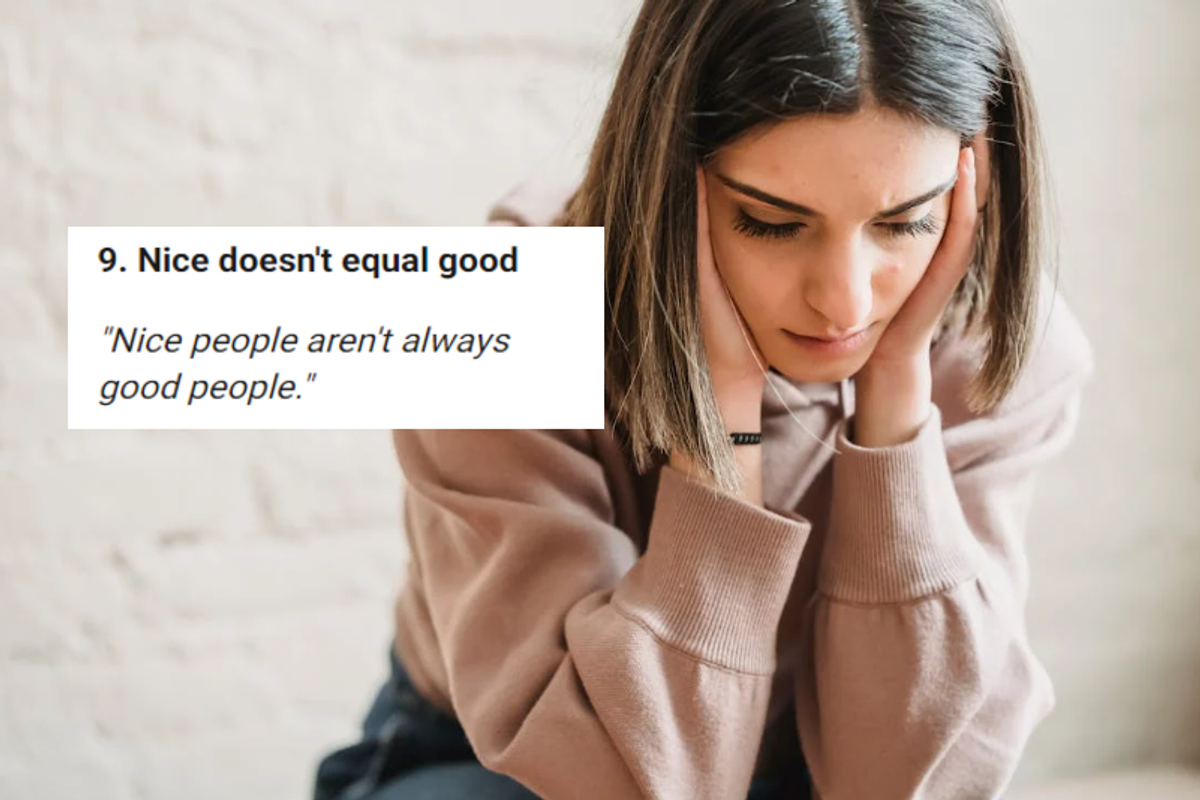Archivists from around the world share their most unique finds—and some are super weird
Tiny books, presidential chairs, iconic dresses and more.

The world is full of so many cool things.
This article originally appeared on 10.05.17
Ever wondered what goes on in a library's dark corners, where you aren't allowed to go?
Wonder no more, thanks to The Society of American Archivists' Ask an Archivist Day.
On Oct. 4, 2017, university, corporate, and museum archivists around the world dug out the coolest, rarest, and weirdest items in their collections, photographed them, and put the results on Twitter.
They didn't disappoint. Here's just some of what they had in storage.
1. Small items. Very small items. Like a Bible so tiny that it has a magnifying glass with it for reading.
\u201c@HornbakeLibrary We have this New Testament from 1895 with its case and magnifying glass in our collection. #AskAnArchivist\u201d— UMD SpecColl (@UMD SpecColl) 1507129340
2. And a barely-bigger-than-a-quarter book about birds, published during the deadliest year of the Civil War.
\u201cQ: What's one of the smallest items in our collection? A: This tiny book, "Bird Stories," published in 1863! #AskAnArchivist #umdarchives\u201d— UMD SpecColl (@UMD SpecColl) 1507129340
3. Or this one of three women in West Virginia, rocking the slickest hats of 1908.
\u201c@AlabamaArchives We're partial to hats. West Virginia History OnView | WVU Libraries https://t.co/VSMTWTQEpU #AskAnArchivist #WVRHC #ArchivesFashion\u201d— Alabama Department of Archives and History (@Alabama Department of Archives and History) 1507135579
4. A folding chair used by Barack Obama.
\u201cNewest acquisition? That would be this folding chair that @BarackObama sat in during his #Rutgers250 commencement address. #AskAnArchivist\u201d— Rutgers Special Collections & University Archives (@Rutgers Special Collections & University Archives) 1507132827
5. Dirt from the grave of a well-known American writer.
\u201cQ:What's a spooky item in your collections? A:Here's a pine coffin owned by Katherine Anne porter & dirt from her grave site #AskAnArchivist\u201d— UMD SpecColl (@UMD SpecColl) 1507149032
6. A Roman-era coin, depicting either a man in a helmet or a curious understanding of human anatomy.
\u201cWhat is our oldest item? A Didrachm coin minted between 280 B.C.E.-276 B.C.E.\n\n#AskAnArchivist #RomanCoins\u201d— Rutgers Special Collections & University Archives (@Rutgers Special Collections & University Archives) 1507129302
7. A photo of a sailor whose ship vanished in the Bermuda Triangle in 1918.
\u201cHamilton Beggs is also part of the Gold Star Files. He was on the USS Cyclops when it disappeared in the Bermuda Triangle. #askanarchivist\u201d— Alabama Department of Archives and History (@Alabama Department of Archives and History) 1507136852
8. And one of of other World War I sailors giddily posing on top of two ginormous battleship guns.
\u201cHow many photographs are there in the archive and how can we find these? https://t.co/udBOw9b36d #AskAnArchivistWW1 #AskAnArchivist #WW1\u201d— Today's Document (@Today's Document) 1507139116
9. A child's sketch of a groundbreaking concept car — complete with a built-in kitchen and a 300 mph top speed.
\u201cThis child's car drawing sent t @ford from the 1960s has a stove, icebox, seat belts, and can go 300mph! #askanarchivist THF268169\u201d— The Henry Ford (@The Henry Ford) 1507137015
10. A legal document drawn up in 14th century France.
\u201cQ: What's the oldest item in our collection? A: This French legal document dated 1334. Check out that wax seal! #AskAnArchivist #umdarchives\u201d— UMD SpecColl (@UMD SpecColl) 1507143664
11. A pioneering, ultra-glittery work of feminist art.
\u201cWhat is the most glittery object in our collection? That would be this untitled drawing by Miriam Schapiro. \n\n#AskAnArchivist\u201d— Rutgers Special Collections & University Archives (@Rutgers Special Collections & University Archives) 1507122040
12. A photo of fashion designer Ann Lowe, the woman who designed Jackie Kennedy's wedding dress.
\u201c#ArchivesFashion #AskAnArchivist Did you know that Alabama native Ann Lowe designed Jackie Kennedy's wedding dress?\u201d— Alabama Department of Archives and History (@Alabama Department of Archives and History) 1507137183
13. A script for a rarely heard "Empire Strikes Back" radio play.
\u201c@KBtheLib @nprchives Our #StarWars radio dramatization is an institutional favorite! #AskAnArchivist\u201d— NPR RAD (@NPR RAD) 1507064825
14. An image of rows and rows of classic radiator shells waiting to be installed at a Depression-era Pontiac plant.
\u201cQ: What are these?\nA: Pontiac radiator shells, circa 1937.\nQ: Where is this photo?\nA: @HBSBaker \n#AskAnArchivist \nhttps://t.co/UuOV1KJeH6\u201d— Working Knowledge (@Working Knowledge) 1507135835
15. A handwritten letter from Sigmund Freud.
\u201cCool KSHS collection: Menninger Foundation archives include Sigmund Freud letters. https://t.co/SgKrkCXYZh #AskAnArchivist\u201d— Kansas History (@Kansas History) 1507135195
16. Ancient technology.
\u201cQ: Do you have floppy discs in the archives? A: Yes! Our e-records archivist helps preserve data on lots of outdated formats #AskAnArchivist\u201d— UMD SpecColl (@UMD SpecColl) 1507136506
17. Proof that Queen Elizabeth II is apparently a secret football fan.
\u201cYou voted & the results are in! Who's #UMD's most famous visitor? Queen Elizabeth II - shown here at a football game in 1957 #AskAnArchivist\u201d— UMD SpecColl (@UMD SpecColl) 1507125652
18. A memo warning campus police about an upcoming Ozzy Osborne concert, citing the singer's involvement with "abuse of animals" and "alleged satanic groups."
\u201cQ:What's the coolest thing you found in the archives lately? A:How about a 1983 police memo when Ozzy Osborne played at UMD! #AskAnArchivist\u201d— UMD SpecColl (@UMD SpecColl) 1507123820
19. And why, if you want to see more, you'll have to visit a library or archive in person.
\u201c#AskAnArchivist When people ask "so is everything digitized?" I usually reply with a photo of our caverns, which I hope answers the question\u201d— UMN Libraries (@UMN Libraries) 1507128190
You can happily scroll through dozens more like this using the #AskAnArchivist hashtag.
\u201cQ: Describe the role of an archivist in haiku form: \nArchivists connect\nus between the record of\nthe past and present \n#AskAnArchivist\u201d— M+ (@M+) 1507101297
No appointment necessary.
This article originally appeared on 10.05.17
Update 10/9/2017: The headline was changed to reflect that archivists and librarians differ, in part by the type of materials handled.








 Comparison is the thief of joy.
Comparison is the thief of joy.  Things don't care if you throw them away.
Things don't care if you throw them away.  You might be the villain in someone's story.
You might be the villain in someone's story.  We judge others differently than how we judge ourselves.
We judge others differently than how we judge ourselves.  Nobody is paying attention to you (and that's a good thing).
Nobody is paying attention to you (and that's a good thing).  We accept the love we think we deserve.
We accept the love we think we deserve. 
 Screenshot of Jamie Lee Curtis and Michelle Yeoh at the 2023 Golden Globes
Screenshot of Jamie Lee Curtis and Michelle Yeoh at the 2023 Golden Globes  Jamie Lee Curtis at the 41st Emmy Awards in 2006
Jamie Lee Curtis at the 41st Emmy Awards in 2006 Gif of Jamie Lee Curtis clapping via
Gif of Jamie Lee Curtis clapping via 
 Individual impact isn't as inspiring to Gen Z as it was to
Individual impact isn't as inspiring to Gen Z as it was to  Gen Z is much more black and white about behaviors than previous generations.
Gen Z is much more black and white about behaviors than previous generations. 
 The changing room brought out a painful revelation.
The changing room brought out a painful revelation. 
 A woman appears stressed while working on laptop. Photo by
A woman appears stressed while working on laptop. Photo by